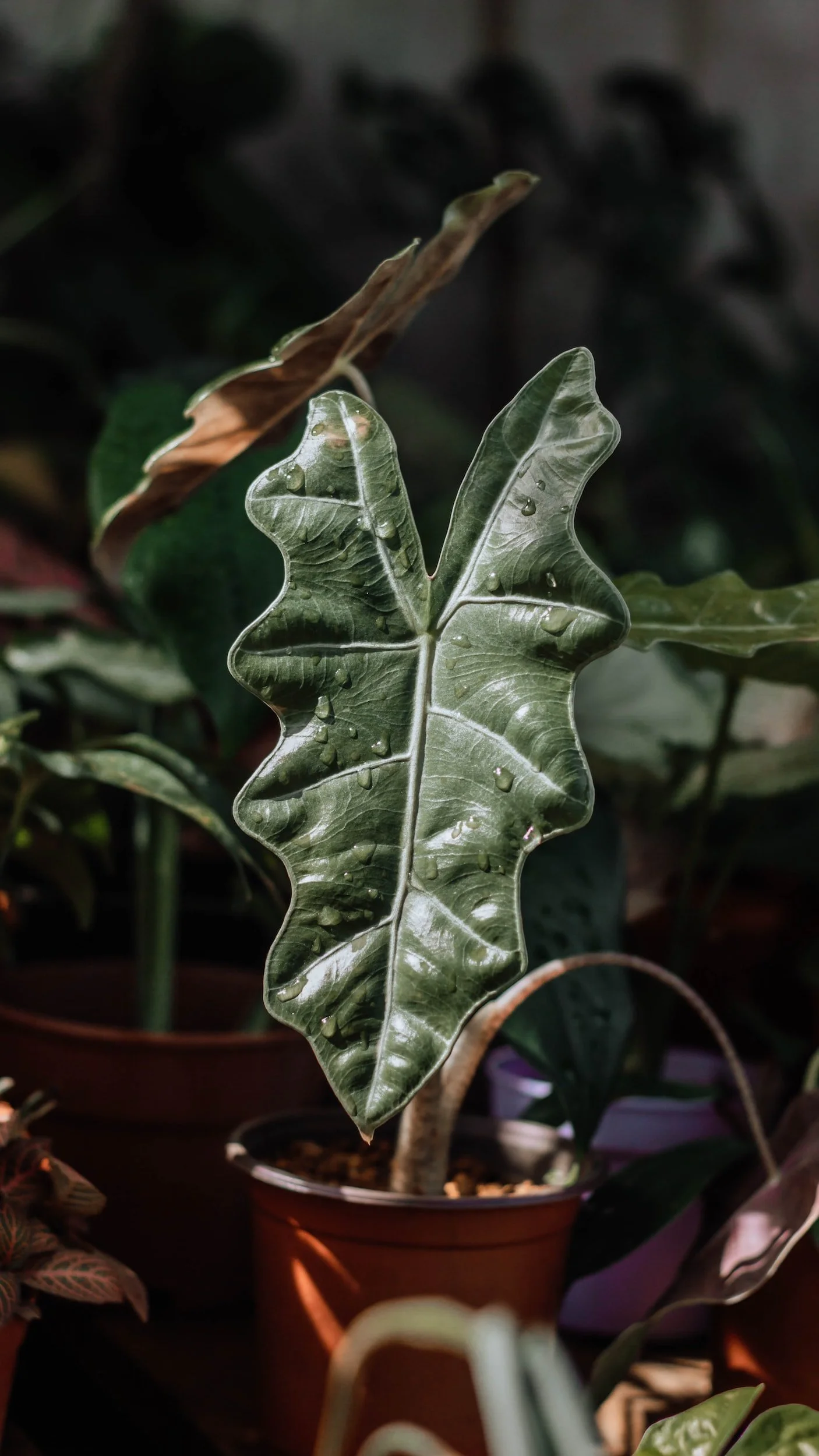5 Native Philippine Plants to brighten up your Space (and are easy to keep alive!)
Whether you’re a plant enthusiast looking to add to your collection or a new plant parent looking for your first plant, here are a few suggestions highlighting common house plants you might not have known are from the Philippines but are readily available here in the US.
1. Cebu Blue Pothos (Epipremnum Pinnatum)


Starting off the list with one of the most common house plants, pothos! I’m sure by now you’ve seen this plant in the back of all the aesthetic vlog videos, or maybe you’ve heard about how beginner-friendly it is if you’re just getting into plants. This variety of pothos, scientifically known as Epipremneum Pinnatum, is native to Cebu, Philippines. Although it’s mainly known for its silver-bluish hue, the Cebu Blue is unique in other ways compared to other pothos varieties. It has 2 distinct phases and appears different in each one. During its younger stages it has bluish, elongated leaves, and as it matures, the leaves start to split, making it look somewhat similar to a monstera. So, if you’re a fan of monsteras but want something a bit different, check out the Cebu Blue pothos.
2. Wax Flower (Hoya Cumingiana)


If you’re looking for a cute plant to decorate your space, this one’s for you! Hoyas are well-known for their star-shaped flowers and are commonly used as ornamental plants. The Hoya Cumingiana is a waxy, and sweet citrus smelling succulent that can be found across the Philippines particularly in Luzon, Mindoro, and Palawan. The Philippines is home to at least 88 different hoya species, being perhaps the most diverse compared to other countries with hoyas. If you can’t find this species near you, another popular one, also native to the Philippines, is the Hoya Pubicalyx, a deep maroon color that looks just as stunning. With the amount of hoya varieties out there that come in different colors, you’re bound to find the right one for you.
3. Pitcher Plant (Nepenthes Alata)
Another plant widely spread across the Philippines, but especially throughout Mindanao and Luzon, is the Nepenthes Alata, aka pitcher plant. A carnivorous plant that consumes insects by causing them to slip on its rim or inner-wall, and fall into the plant. The fluid filled inside the pitcher plant allows it to digest the insects. I know what you’re thinking, the thought of a carnivorous plant is a little off-putting, but its vibrant colors and sweet fragrance might convince you otherwise. Most species of nepenthes try to mimic flowers in its appearance and scent, so aside from its insect eating ways, this plant would definitely be an interesting addition to your collection! Again, don’t worry if you can’t find this species, there are many others native to the Philippines as well, such as the N. Ventricosa or N. Ventrata, a hybrid of the two.
4. Kris Plant (Alocasia Sanderiana)
Next up we have Alocasia Sanderiana, otherwise known as kris plant. Native to Mindanao, this Alocasia is an eye-catching plant characterized by its jagged leaves and bright colored veins. It was once endangered due to over-collecting, and is now commonly used to create hybrids of Alocasia. One of the most popular hybrids is Alocasia Amazonica, a hybrid of A. Sanderiana and A. Longiloba. A unique looking plant that you can find online or locally in stores.
5. Moth Orchid (Phalaenopsis Schilleriana Orchid)
Phalaenopsis orchid via Pexels
Ending the list with one of the most popular flowers, orchids! The Phalaenopsis Schilleriana is found in several areas in the Philippines, including Quezon, Laguna, Cavite, Bicol, Marinduque, and Eastern Visayas. This particular species has been attributed to helping the diversification of orchid hybrids, specifically due to its pink color and the amount of flowers per stalk. It’s great for adding some color to your space or gifting to a loved-one.
Have any other plants to recommend to our readers? Comment below!
Written By Jessa Gagarin
You may want to read more about
























It all started with a table outside of a Seafood City in 2015.
LEAD Filipino volunteers were on hand with clipboards and flyers for a Filipino voter registration drive. It was an early campaign for the grassroots organization, which grew out of a desire to build Filipino civic voice and representation.
Read More